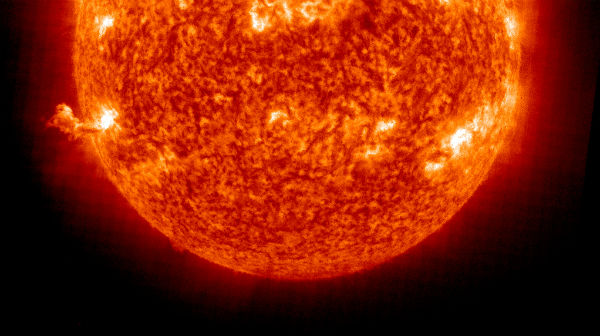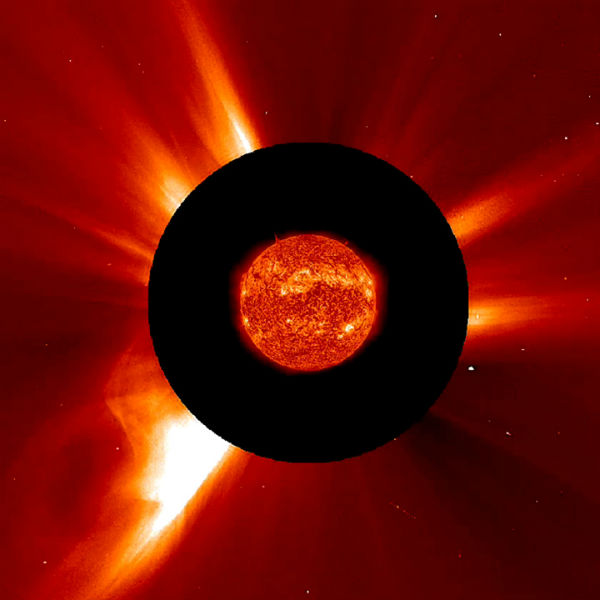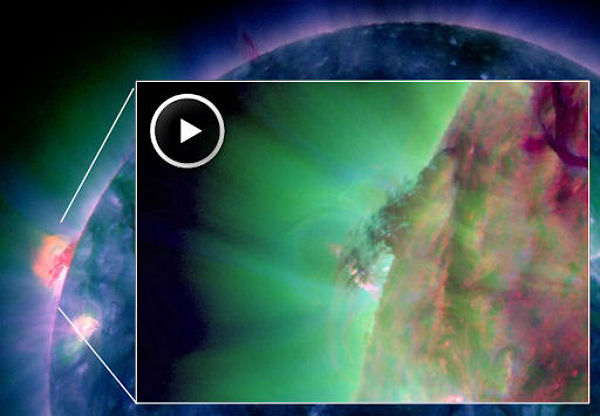An erupting cloud of plasma eclipsed by a dark magnetic filament

Last night, NASA’s Solar Dynamics Observatory (SDO) observed an unusual event on the sun: An erupting cloud of plasma was eclipsed by a dark magnetic filament.
The source of the explosion is a farside active region due to turn toward Earth in a few days. For now, though, the blast site lies just behind the sun’s eastern limb–perfectly situated for this rare kind of eclipse. Note the filament of relatively cool dark material snaking across the sun’s surface in the foreground. That filament partially blocks our view of hot plasma exploding behind it. By studying how the light of the explosion is filtered by the foreground material, SDO mission scientists might be able to learn something new about dark filaments on the sun. (SpaceWeather)

The Sun blasted off a number of coronal mass ejections in just over two days (Dec. 7-9, 2011) recorded SOHO’s C2 coronagraph. The first blast was determined to have originated on the far side of the Sun. The final, good-sized blast (lower left) was caused by the looping prominence eruption visible in the Sun image. The overall level of solar activity continues to increase as the Sun approaches its peak period activity called solar maximum, expected in 2013. (SOHO)
Joint USAF/NOAA Report of Solar and Geophysical Activity (09 Dec 2011)
Solar activity was low. Region 1374 (S17E54) produced a C3 flare at 09/1320Z. Region 1374 had separation occurring within the main spot. Growth was noted in Regions 1375 (N09E52) and 1372 (N08E03). Solar activity is expected to be low with a slight chance for an M-class flare.
The geomagnetic field was mostly quiet with an isolated active period at high latitudes occurring during the 09/1200-1500Z period. Solar wind speed has remained relatively constant between 300 to 330 km/s while the total magnetic field has increased from 3 nT to 8 nT.
The geomagnetic field is expected to be mostly quiet on Day 1 (10 December). Activity is expected to increase to quiet to unsettled levels with a slight chance for active periods on Day 2 (11 December) due to effects from a coronal hole high speed stream (CH HSS). A return to mostly quiet conditions is expected on day 3 (12 December).
…


[…] An erupting cloud of plasma eclipsed by a dark magnetic filament By chillymanjaro […]